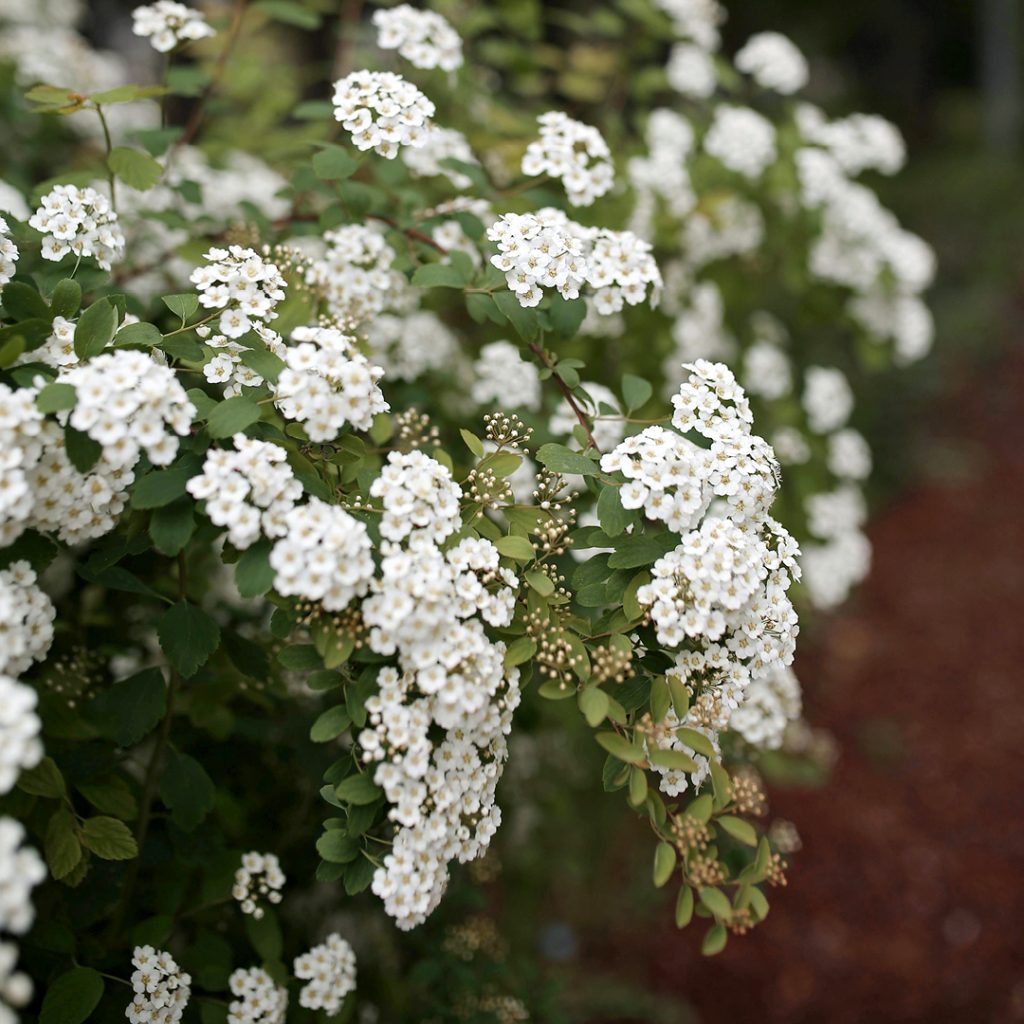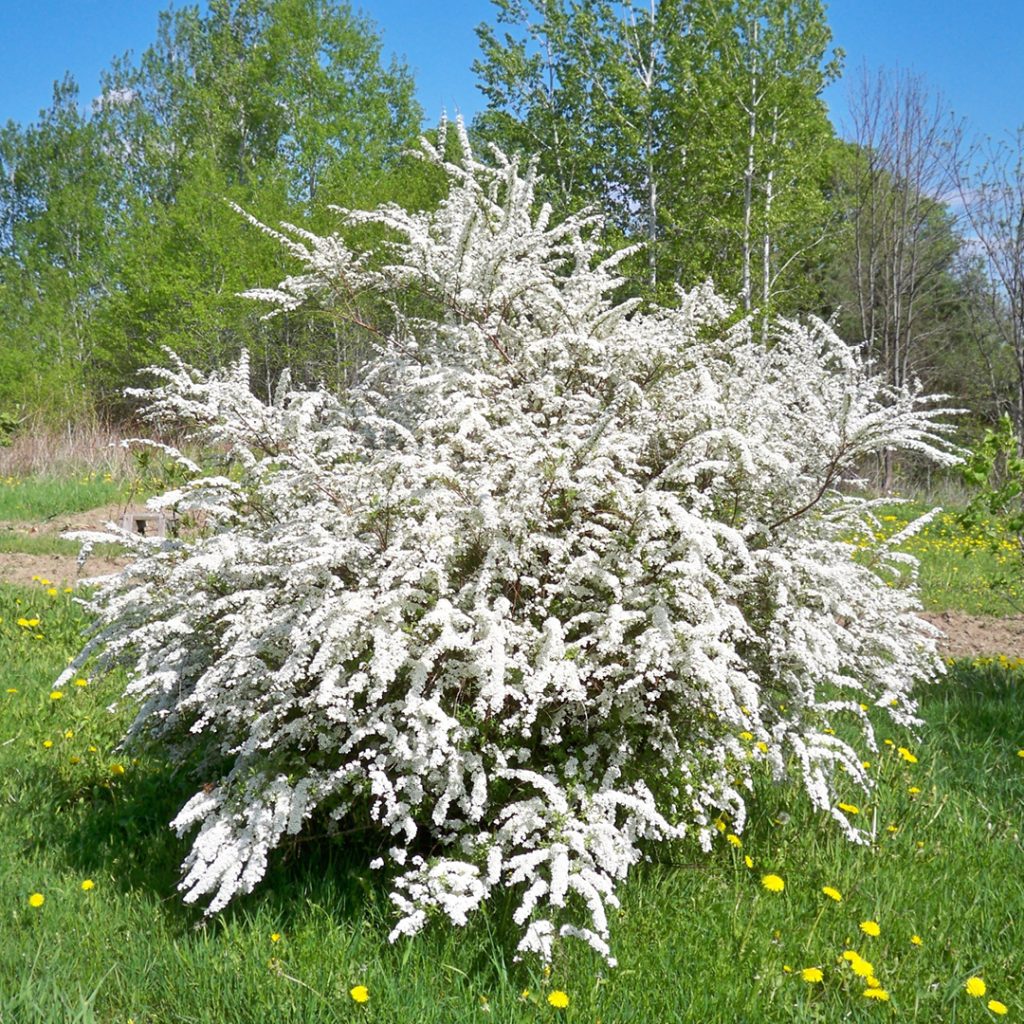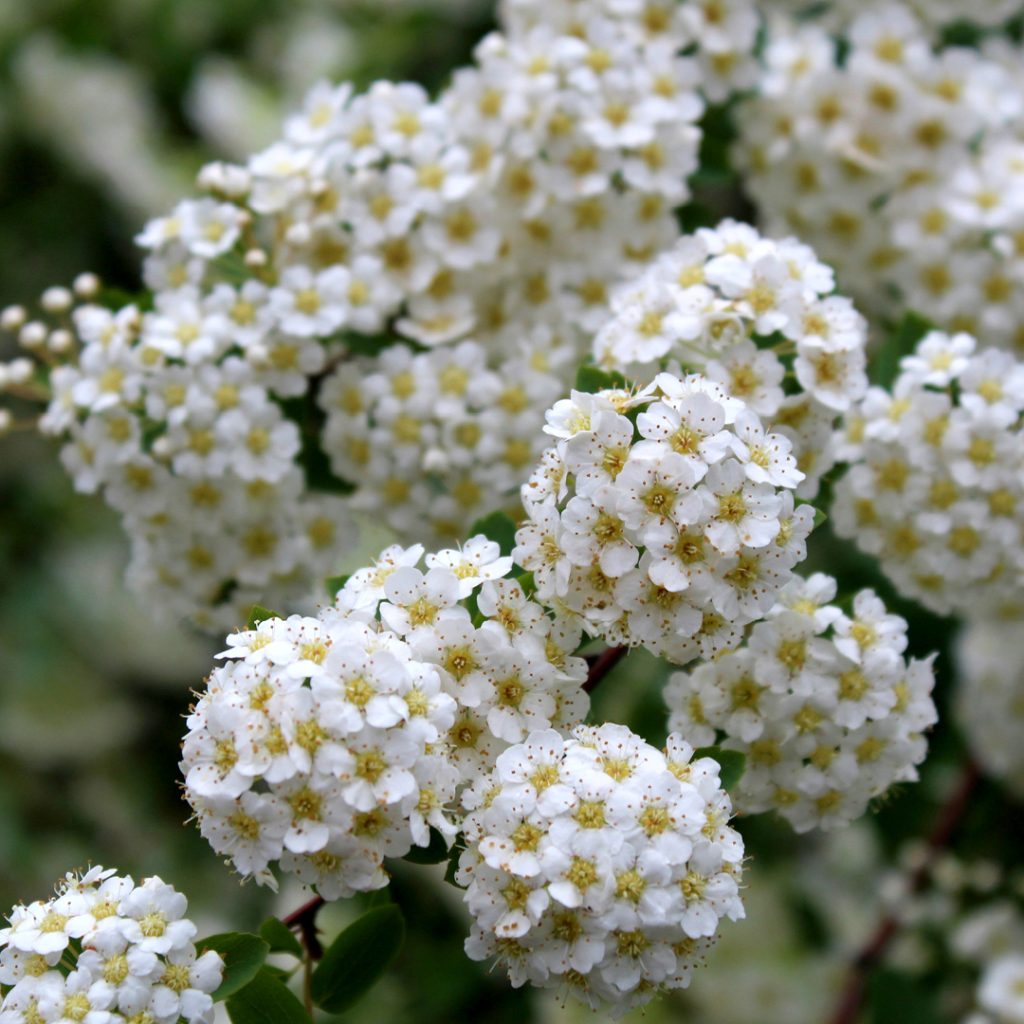In spring, adorned with clusters of small, white flowers that cascade along its gently arching branches, Spirea prunifolia, commonly known as Bridal Wreath Spirea, bursts into bloom, creating a stunning display of floral finery unmatched by any other spring-flowering shrub. No other holds the timeless charm and delicate allure of the Bridal Wreath. This classic plant has adorned gardens for generations, gracing landscapes with its timeless beauty, and will continue to carry its legacy far into the future.
Reasons for Bridal Wreath’s enduring popularity:
- Perfect for Floral Arrangements
Bridal Wreath’s abundant white blossoms make it a prized addition to floral arrangements, particularly for weddings and special occasions. The delicate clusters of flowers lend a romantic and ethereal touch to bouquets and centerpieces, complementing a variety of other blooms with its timeless elegance. - Old-Fashioned Plant with Modern Appeal
While Bridal Wreath may evoke nostalgia for bygone eras with its old-fashioned charm, it remains a beloved choice in contemporary landscapes. Its deciduous nature, vase-shaped habit, graceful arching branches and profusion of flowers bring a touch of classic beauty to gardens, whether as a standalone specimen, a focal point in mixed borders, or as a backdrop for other flowering shrubs. - Multiple Design Opportunities
In landscape design, Bridal Wreath offers versatility and aesthetic appeal. There are countless ways to incorporate this enchanting shrub into your outdoor space:- Hedge and Border Planting:
Plant Bridal Wreath in a row to create a stunning flowering hedge or border along pathways or property lines. Its cascading branches will form a picturesque backdrop for the rest of your garden. - Mixed Garden Beds:
Pair Bridal Wreath with other spring-flowering shrubs and perennials to create dynamic mixed garden beds. Combine it with plants like lilacs, azaleas, and tulips for a vibrant spring display. - Focal Point:
Some Bridal Wreath Spirea cultivars can reach an impressive 8 feet high. Plant a single specimen in a prominent location, such as the center of a circular garden bed or at the end of a pathway, to serve as a focal point and draw the eye with its graceful form and abundant blooms. - Understory Tree Companion:
Use Bridal Wreath as an understory plant beneath taller trees, where it will thrive in dappled sunlight and add a layer of interest and texture to the woodland garden. - Container Planting:
Grow Bridal Wreath in containers on patios or balconies for a burst of spring color and fragrance. Pair it with trailing vines or annual flowers for a whimsical and romantic display.
- Hedge and Border Planting:
- Pollinator Magnet
Bridal Wreath Spirea attracts all sorts of pollinators in abundance. All types of pollinating bees, from honey to mason, love Spirea. It attracts butterflies, hummingbirds, as well as many lesser-known, yet equally as important, pollinators. - Deer Resistant
Resistant to deer nibbling, Bridal Wreath Spirea is an excellent choice for landscapes that deer frequent.
Bridal Wreath Care
If you are considering adding Bridal Wreath Spirea to your landscape, it’s an easy decision as it is so very simple to plant, care for, and maintain. Please note that this plant is best suited for growing in USDA Hardiness Zones 4 through 8.
- Site – Plant your spirea in a location that receives full sun to partial shade. These plants flower best in full sun.
- Soil – Spirea prefers moist, fertile soil with a slightly acidic to neutral pH. Before planting, incorporating organic matter like compost into the soil helps to improve drainage and soil nutrition.
- Water – Be sure to water newly planted spirea regularly to help establish their root systems. Once established, they are relatively drought-tolerant but benefit from consistent moisture, especially during hot and dry periods.
- Mulch – Apply a layer of mulch around the base of the plant to conserve moisture, suppress weeds, and regulate soil temperature. Keep the mulch a few inches away from the stems to prevent rot.
- Pruning – Pruning is essential for maintaining the shape and vigor of bridal wreath spirea. Prune immediately after flowering to avoid sacrificing next year’s flowers. Remove dead or damaged branches, as well as any overcrowded or awkwardly tall stems.
- Fertilize – Apply a balanced fertilizer in early spring before new growth emerges to provide nutrients for healthy foliage and abundant blooms. Follow the manufacturer’s recommendations for application rates.
- Ongoing Care – Keep an eye out for common pests such as aphids, spider mites, and scale insects. Treat infestations promptly with insecticidal soap or horticultural oil. Additionally, ensure good air circulation around the plant to reduce the risk of fungal diseases like powdery mildew.
Top Bridal Wreath Spirea Varieties
- ‘Plena‘:
This double-flowered variety features densely packed clusters of white blooms, creating a fuller and more opulent appearance compared to the single-flowered species. This shrub can grow up to 9 feet tall. - ‘Renaissance‘:
One of the standout qualities of ‘Renaissance’ is its compact growth habit. While still maintaining the elegant arching form characteristic of bridal wreath spirea, ‘Renaissance’ tends to be more restrained in size, about 5 feet tall, making it well-suited for smaller gardens or tight spaces. - ‘Snowmound‘:
True to its name, ‘Snowmound’ produces cascades of pure white flowers that cover the branches in spring, resembling a blanket of snow. Its compact habit, 2 to 4 feet high, makes it ideal for smaller gardens and containers. - ‘Bridal Veil‘:
A true classic with its long, arching branches adorned with single white blossoms, ‘Bridal Veil’ creates a stunning cascading effect that adds drama and elegance to any landscape. It ultimately grows to about 8 feet tall.
Consider planting Bridal Wreath this season. With its timeless beauty, versatility in the landscape, and enchanting floral displays, it continues to captivate gardeners and florists alike. Whether used as a focal point in the garden or as a cherished addition to floral arrangements, this classic shrub never fails to invoke nostalgia and awe. With proper planting and care, it will reward you year after year with its graceful form and abundant blooms, making it a must-have for any gardener seeking to cultivate beauty and romance in their outdoor space.








